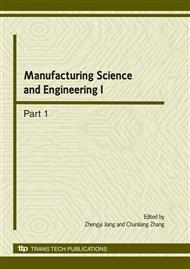p.3952
p.3957
p.3963
p.3967
p.3974
p.3978
p.3985
p.3989
p.3993
Characteristics of Underwater Swirling Plasma Arc Cut Quality
Abstract:
The present work experimentally investigates the cut quality for underwater dual swirling plasma arc process at different operating gases. With a decrease in the oxygen content of the cutting operating gas, kerf shape and cut surface smoothness go well, but the adherent dross and cut hardness increase while cutting heat affected zone becomes wide. On the low-speed side of the cut, there are smaller bevel angle, more dross, and greater straightness and hardness. Compared with the dry plasma cutting, the underwater plasma process yields a cut of better shape but higher hardness.
Info:
Periodical:
Pages:
3974-3977
Citation:
Online since:
March 2010
Authors:
Price:
Сopyright:
© 2010 Trans Tech Publications Ltd. All Rights Reserved
Share:
Citation:


